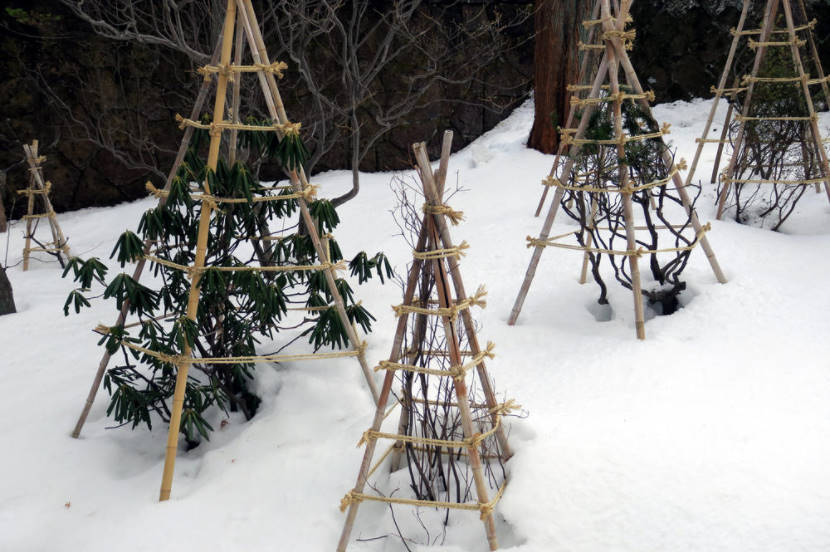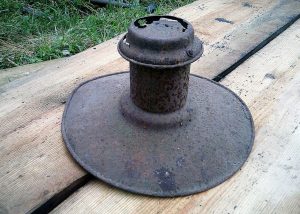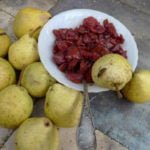We continue to analyze the errors and shortcomings that summer residents often allow in the preparation of the site for the winter. One of the stages of such training, which causes a lot of debate and myths, the winter shelter of plants.
If you hide them sooner than you need to, or if you do it wrong, they will most likely support you. Or be amazed by a fungal infection. Remember that the entire upper, aboveground part of the plant works as an indicator that “tells” the root system, what’s happening, what to prepare for.
Principle such: any multi-year a plant for successful wintering should survive without shelter frost in -4…-7 °C, and that’s fine.
Often gardeners, especially beginners, tend to hide most of the plants in the garden and even insulate the fruit trees. But this is extra work and a huge amount of time and materials! Not so many plants that really need it. And another crucial type of cover. There are also many stereotypes and myths.
For example, it is not necessary to bet on the spruce branches – he basically holds the snow, which in General is good. But he does not insulates the plant, i.e. does not solve the problem. In addition, it is disposable, it should be cleaned in the spring, the needles fall off, they are difficult to collect. But the main difficulty – where to get it. There should be a forest, and spruce branches should be located low. Not to cut the tree in the end!
But the covering materials is convenient to store: after use, they are collected in large bags and supplied with a plate with a signature, for which this shelter is intended. Or you can simply tie them with a rope and tie the plate.
Another trend is to put absolutely all the covered plants. This, first, can cause fractures: not all trees and shrubs can be successfully bent. And secondly, after that, they need to fall asleep with any materials that can contribute to aging. This technique was used before, when there were no covering materials, and in order to cover the plants with snow. But if you have a good “house” they quietly spend the winter in a standing form, without fillings.
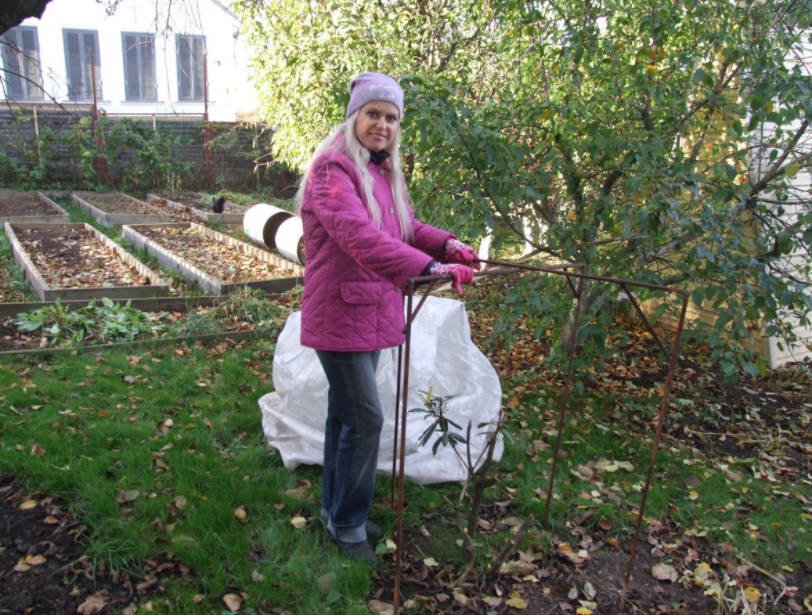
U-shaped structures for shelters
However, there are exceptions, and some plants still need to bend. As a rule, it is groundcover or climbing (such as wicker roses or clematis), or those that form thickets, and for them it is difficult to make a shelter – for example, raspberries.
So, what plants and how to shelter for the winter?
Some ornamental shrubs
Forsythia, japonica, hydrangea macrophylla: these shrubs is enough to make the covers of thick were lutrasil, density 60. Only they should be double, that is, one case is put on the other. The forsythia can be immediately put on, but for the quince and hydrangeas is better to first make the frame of the set of cross arcs from collapsible greenhouses.
Hybrid tea and climbing roses
- If the roses are low, you can close them with a wooden box, and on top – a dense lutrasilom. The last layer is polyethylene film. And it is worn not until the end of November. Early spring film is removed and lifted lutrasil from the ends of the box for ventilation.
- If rose high on every Bush you need at least two arcs or U-shaped designs made out of rebar.
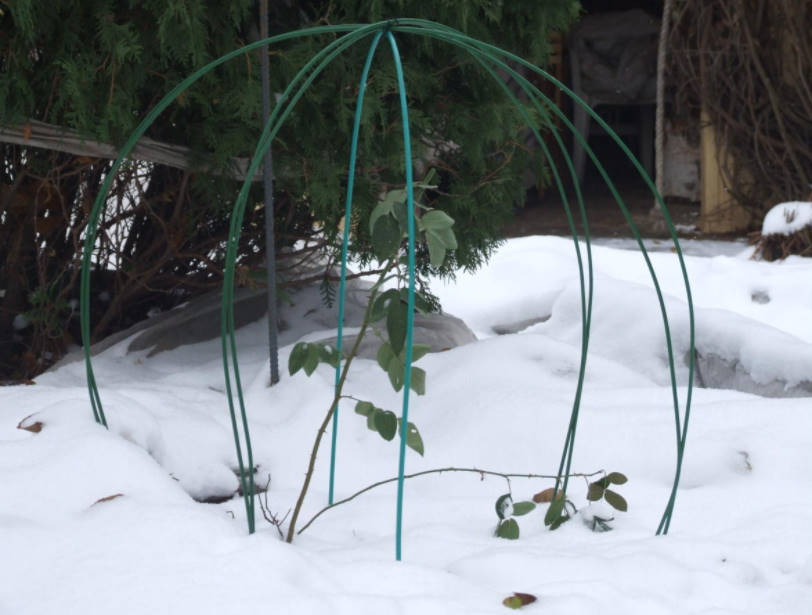
They put Bush over the crisscross, and covered the top two layers were dense lutrasil, and polyethylene. Ventilate this structure in the spring is even more convenient.
Clematises
- If clematis is not cut off, and removed from the support and placed on the ground, then it is necessary to put a facade foam, and put on top of the box and cover as well as roses.
- If clematis trimmed, it should be covered with a piece of thick were lutrasil, folded 4 times, and secure the edges with
stones.
Alpine plants
They are more afraid of frost, and moisture. In nurseries “residents” Alpine often get wet, as large areas of plantings impossible to properly conceal.
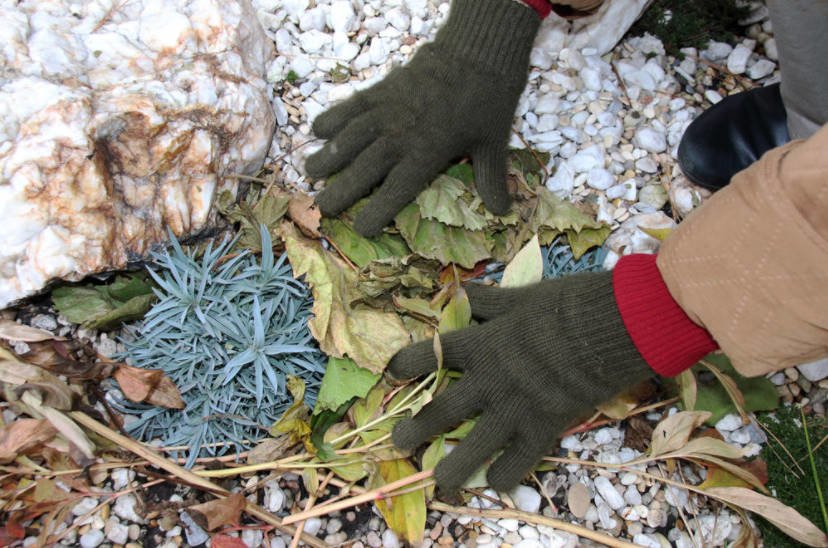
They need a lot of air, so the shelter is required high.
- To do this, use a lot of U-shaped structures of the rebar, which are exposed in different directions, so that they are above all the landings of the “Alpines”.
- After that it is tied wooden slats – a kind of “frame” for the roof of the house.
- Then a design cover with lutrasilom of average thickness, and then – a polyethylene film.
Grape
It must first trim, it was late autumn, as in spring he “cries” and loses a lot of juice when cutting.
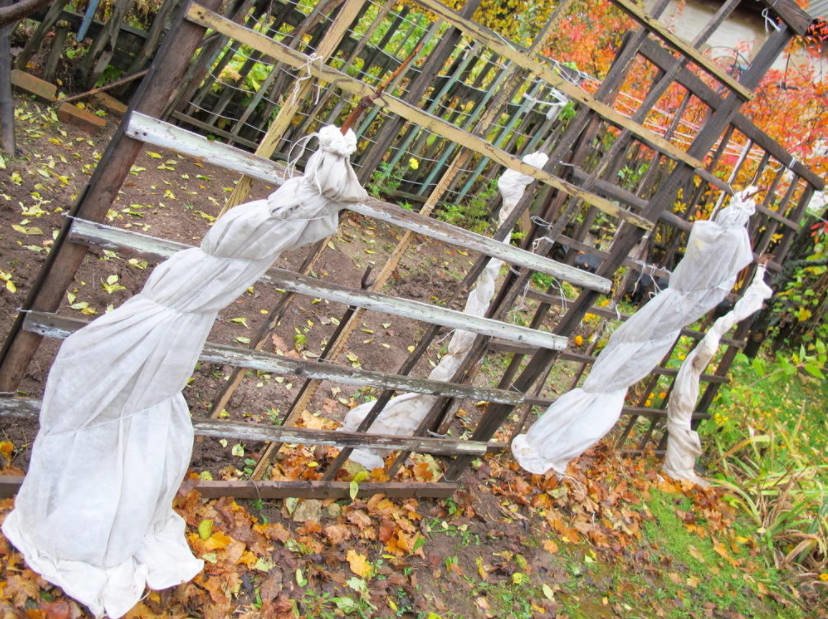
Then:
- Lay on the ground foam, a piece of foam (which shift the roof).
- Lay on him grapes.
- To fall asleep leaves forest of deciduous trees.
- To put a low arc with lutrasilom.
- If you have only one grape seedling yet, cover it with a mesh vegetable box on top and a lutrasilom box on top.
- In early December, you can additionally close the structure and even film.
Rhododendrons
They also made U-shaped design and put it crosswise over each Bush. Cover a design with a thin lutrasilom, then – lutrasilom of average thickness, and from above – a polyethylene film. Rhododendrons don’t suffer more from the cold, and from dryness and wind. Therefore, the shelter is “puff”. To hide their best after rain when the wet bushes.
Strawberry
The beds are close thick lutrasilom and reinforce the edges with bricks, immediately after cropping of strawberries.
Garlic
It happens that he begins to germinate, and then freezes. The weather lately is unpredictable. Therefore, a patch of garlic after the first frost to cover fallen leaves.
Raspberry
It is believed that it needs to be bent to it was covered with snow. But now it is not uncommon to severe frosts without snow. Therefore:
- Raspberry need link beams.
- Each beam to bend down to the earth, and to tie a brick that bushes were not straightened.
- After this hide all lutrasilom average thickness.
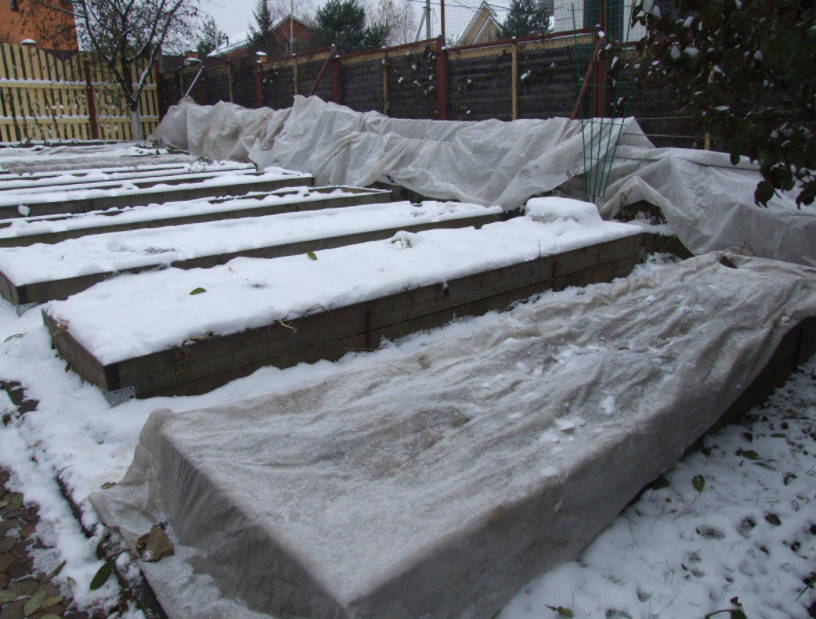
Shelter beds with strawberries and raspberries
Some conifers
Spruce canadian (Konika), thuja and juniper in late winters they can”burn up.” For them sew covers from blackout were lutrasil. However, in the first 3 years after planting, you need to cover absolutely all conifers except spruce. Exception: if a conic or juniper tree is planted in a shady corner of the garden, they can not be closed.
Covers better to wear not immediately in the fall, and in the middle of winter, as under them can dry needles. And wet snow for conifers useful.
Shelters for conifers to make easier than for deciduous trees or shrubs. This is the usual covers of spunbond or lutrasil in the form of bags with a drawstring at the bottom. They sew, pre-measuring the height and width of plants. But just to put cases is impossible: under the weight of snow on them the tops of conifers can bend and even break. Therefore, previously, has not yet frozen earth hammer next to each plant high bar (just above the plants), put on a plastic flower pot (this will prevent contact of the cover with the top of the tree). And only then you can wear a cover.

Stands for future shelter of coniferous plants
For low rocks with a spherical crown can be used cucumber arcs, placed crisscross. Common and blue spruce, pine and larch do not need shelter, but only 3 years after planting. So that all recently planted conifers, regardless of species, will have shelter in for 3 years. Remove all shelters, when all the snow melts.
Bulbous
Planting any bulbous flowers that you made this fall also needs to be sheltered. This is the place where they are planted, cover with a piece of thick lutrasil was double-folded and pressed to the ground by small pebbles. In subsequent years, the bulbs in the shelter do not need.
More about winter ’house’
As practice shows, the best winter shelter for most trees and shrubs – a special design, “house”. For its manufacture need:
- Weld fittings from several U-shaped structures corresponding height. These structures can be called “garden designer”, as they can make” houses ” of any configuration. The rebar enters deep into the ground, which prevents the destruction of the “house” from snowfalls, strong winds, etc.
- The corners of the designs are sharp, so tie them with a cloth (to not broke the covering material).
- Having exposed a skeleton, from above cover with its dense lutrasilom, and then – a dense film.
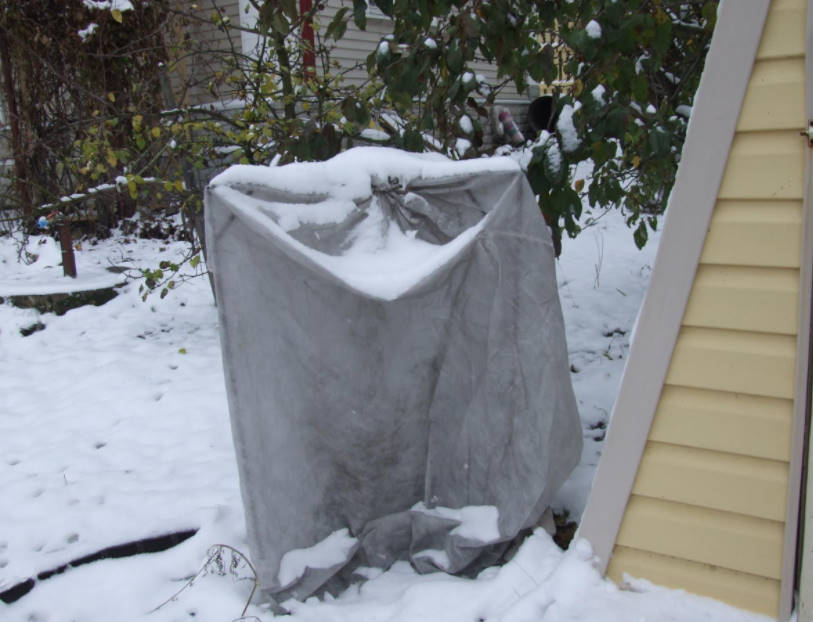
Shelter-“the house”
This “house” is suitable for all plants. He does not press them, gives warmth and does not violate the circulation of air. If your plants are still small, you can replace the reinforcement structures with conventional metal arcs from the greenhouse.
